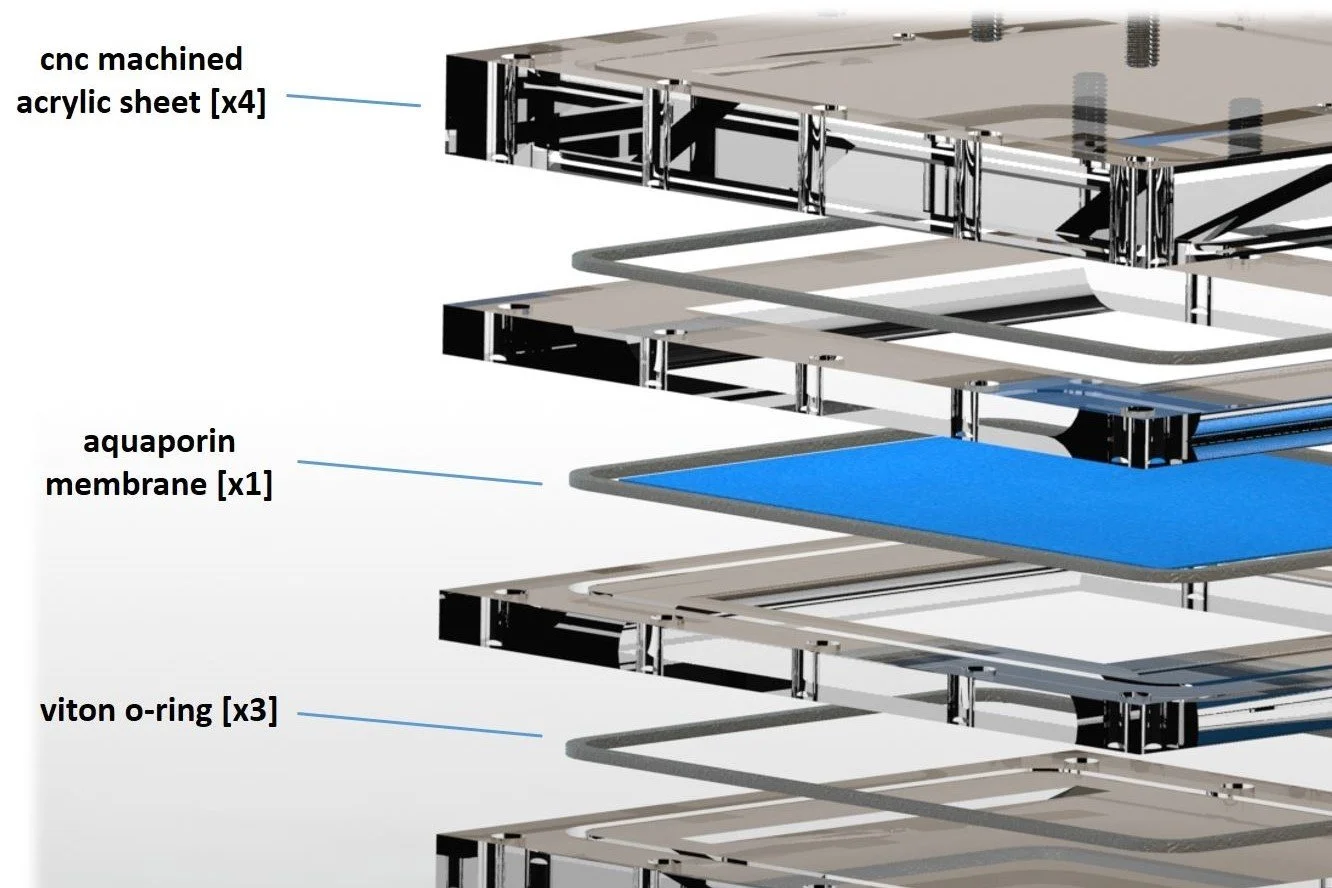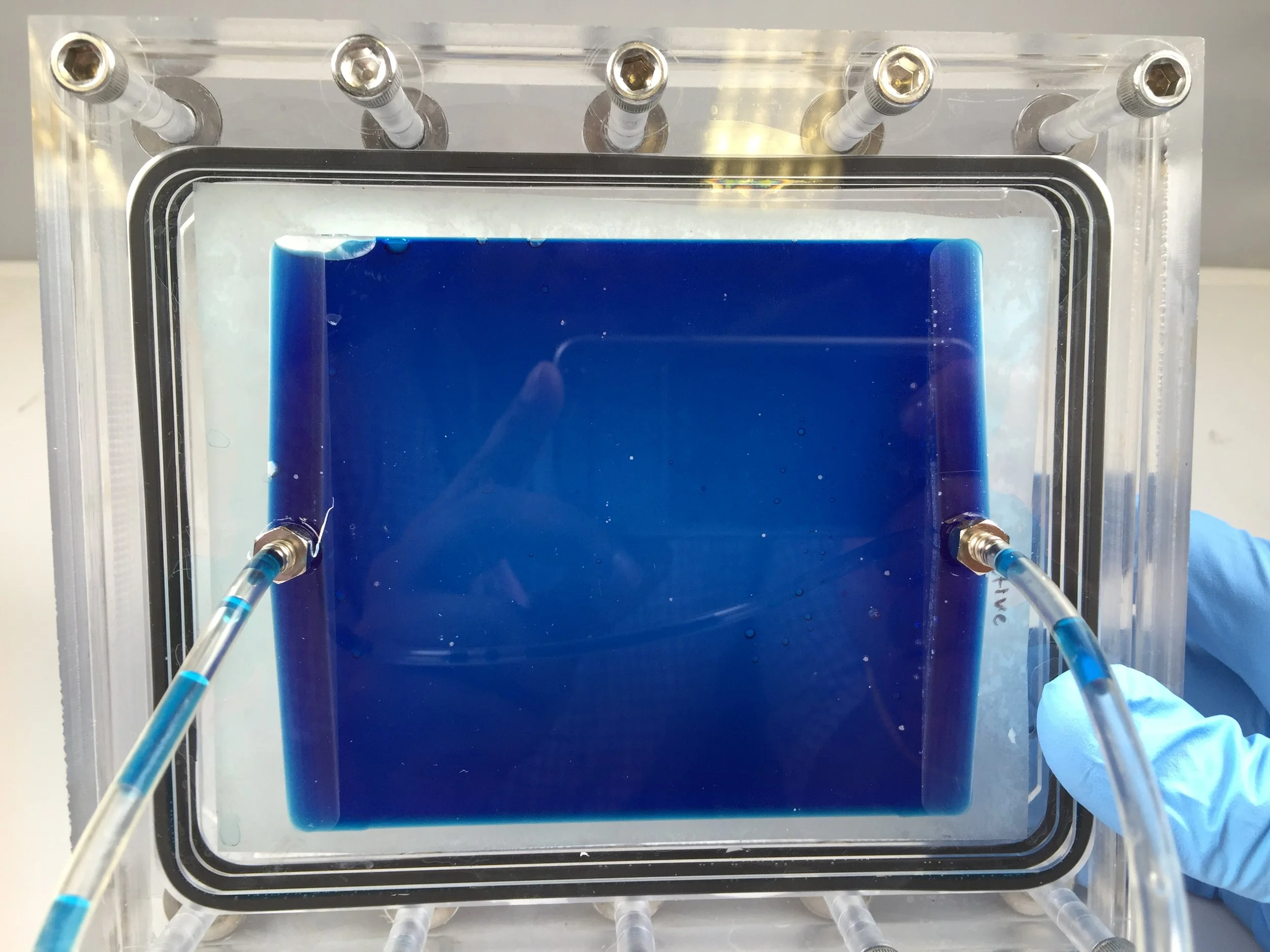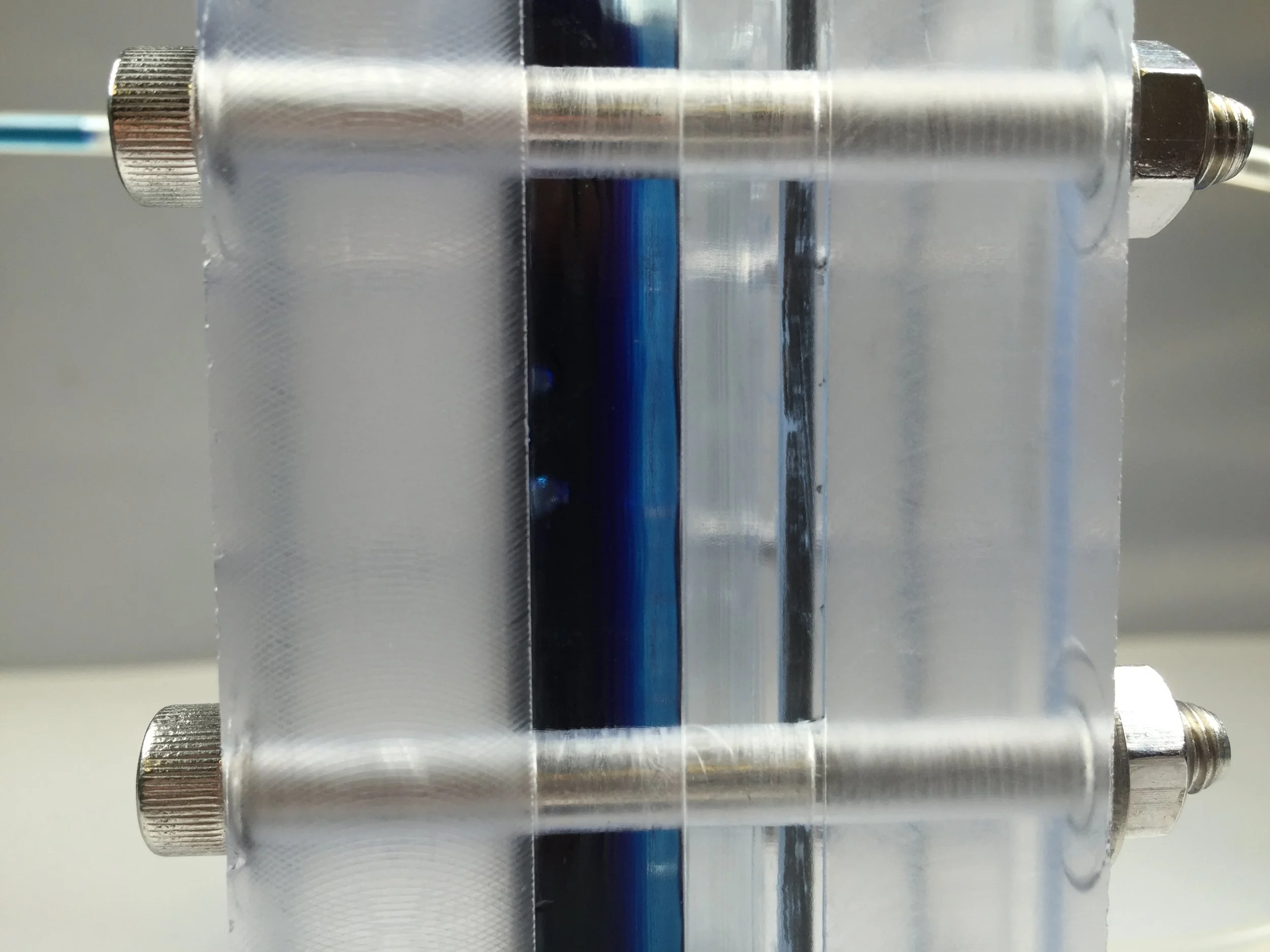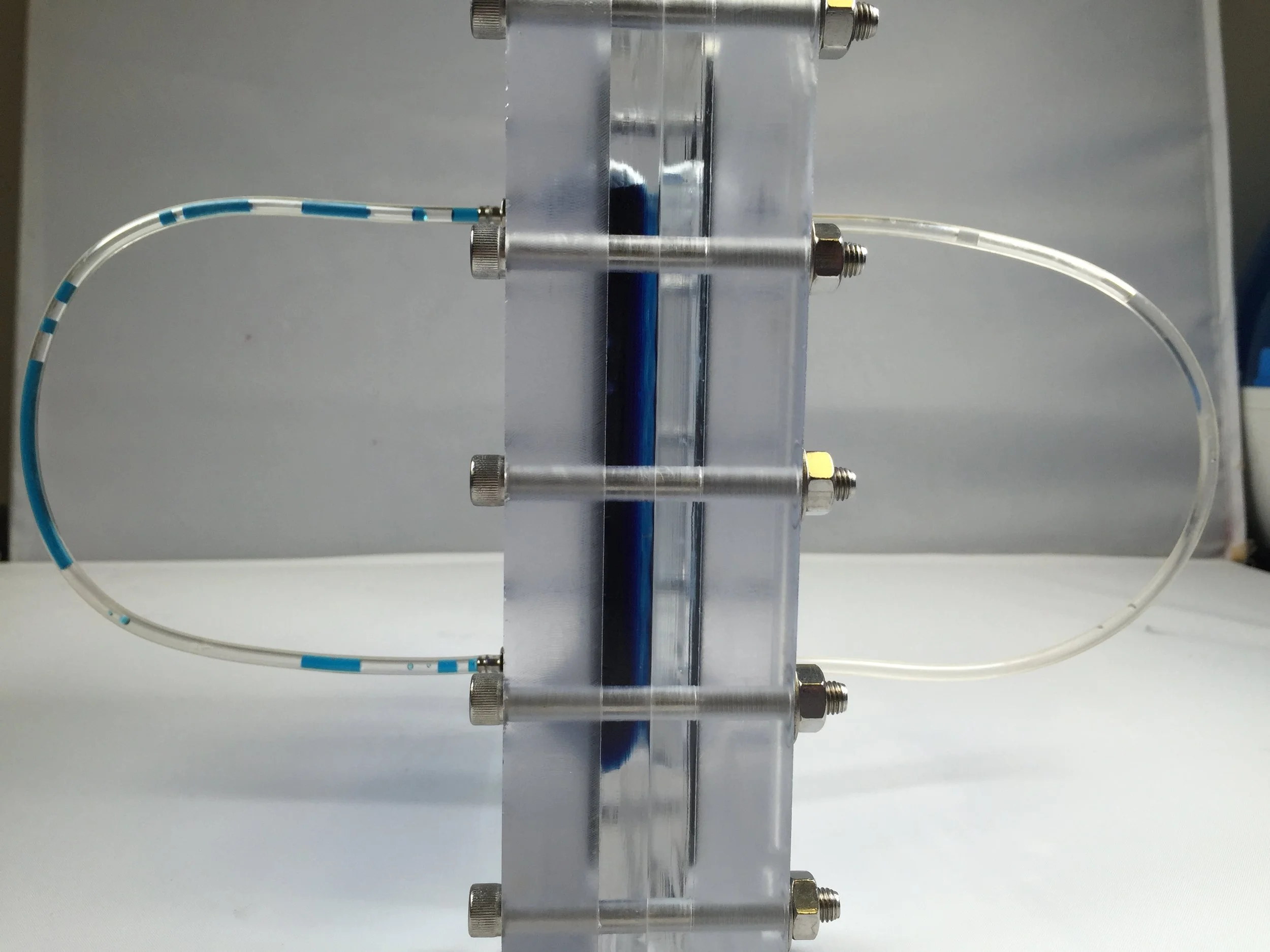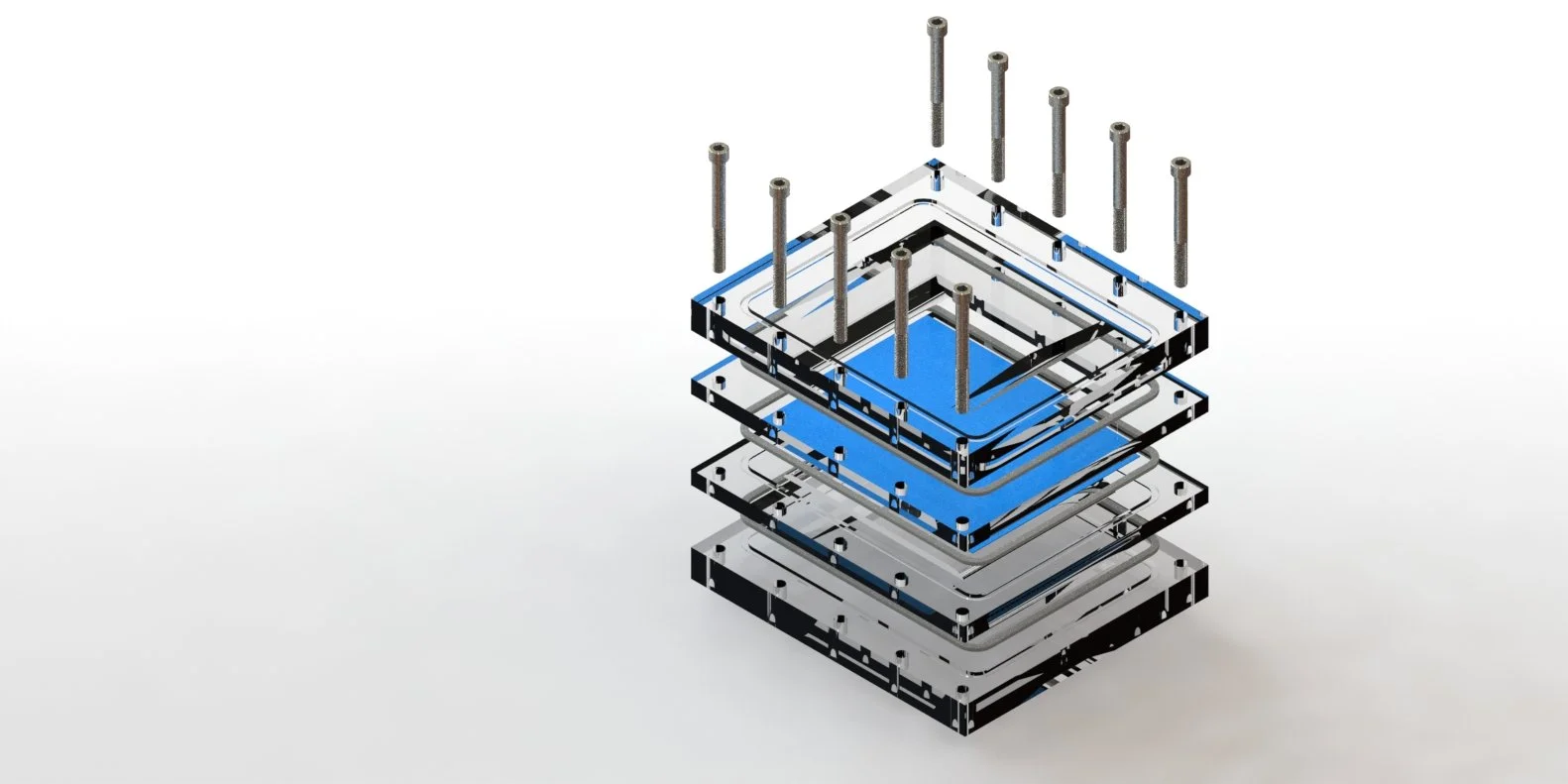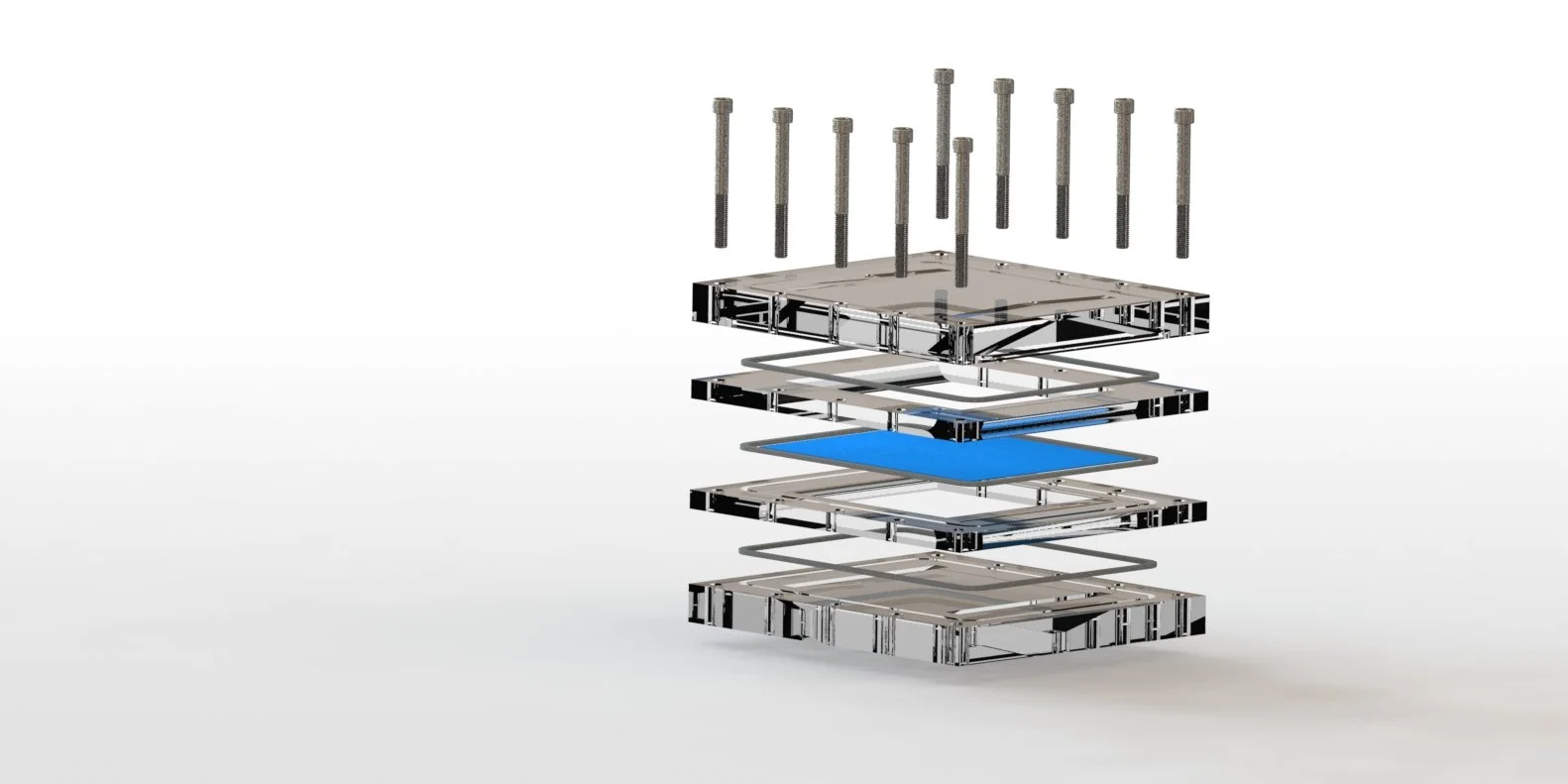Remove salt from seawater using nanoparticles
-
skills: nanoparticle synthesis • Raman spectroscopy • rapid prototyping • technical communication • leadership & teamwork
hardware: CNC mill • 3D printer (FDM)
software: Solidworks • MasterCam
-
Most people are familiar with reverse osmosis (RO), as it's increasingly used to produce drinking water. RO makes use of pressure (typically supplied by a motorized pump) to force feedwater (typically saltwater) through a semi-permeable membrane. The membrane is "semi-permeable" in that it allows only water to pass through and leaves all solutes (e.g., salt) on the "feed" side.
It's called "reverse" osmosis, because this process uses hydraulic pressure to overcome the direction of forward osmosis (a.k.a., osmosis). Forward osmosis (FO)—i.e., the spontaneous net movement of solvent molecules through a selectively permeable membrane from a region of high water potential to a region of low water potential—requires significantly less energy to take place. My teammates and I saw a technology gap in the field of forward osmosis that we thought we might be able to fill.
-
In reading the literature, the main challenge we saw plaguing forward osmosis systems was the buildup of solute on the membrane. This is an issue because it decreases the osmotic pressure possible (i.e., concentration polarization) across a membrane and thus the water flux possible.
While nanoparticles with high solubility in the draw solution can create significant osmotic pressure (and thus flow rates), they’re typically hard to remove from solution or from the membrane. The solution? Easy: magnetic nanoparticles.
We hypothesized that by creating turbulent flow over the membrane (to loosen nanoparticles) and then using electromagnets to recover the solute would minimize concentration polarization and make for an energy-efficient method of producing potable water from seawater. The not-so-easy part? Making this dream a reality in one year as part of our senior thesis project. I mentioned we were optimistic, energetic, and naïve.
I designed and milled a test chamber from slabs of acrylic, we sandwiched a semipermeable membrane in between them, and flowed magnetic nanoparticles that we synthesized on one side of the membrane and saltwater on the other. The outcome? Our innovation used 2% of the energy of competitor systems demonstrated to produce potable water, and we sold rights to the technology and are now each independently wealthy… no but in all seriousness: unfortunately, we all graduated before we could verify the efficacy of our approach.

